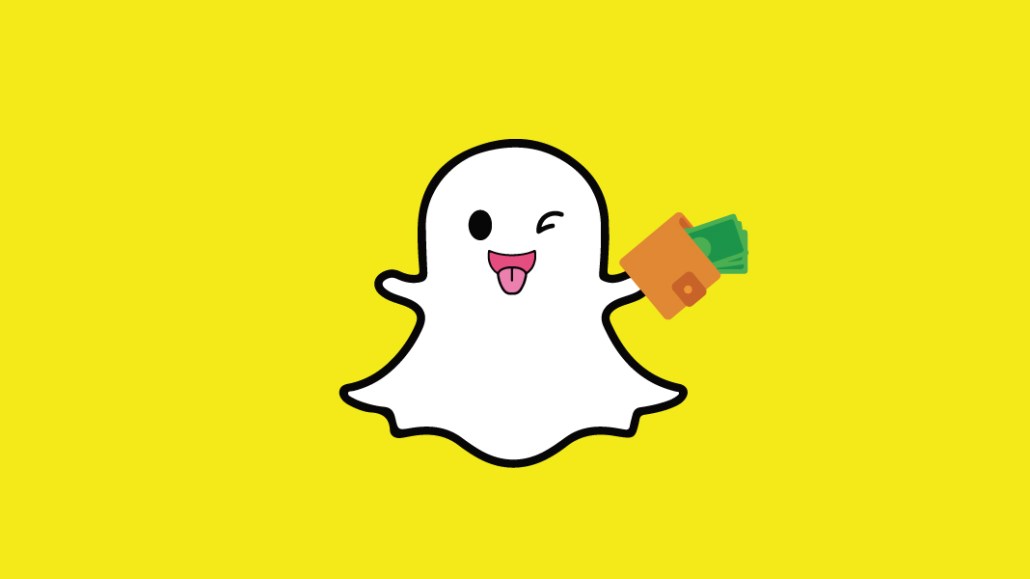Save 50% on a 3-month Digiday+ membership. Ends Dec 5.

This article is part of the Digiday Video Briefing, which features must-reads, confessionals and key market stats. To receive the Digiday Video Briefing, please subscribe.
Snap’s growing interest in the economics of media companies’ Snapchat productions has given them hope that there’s a path to minimum revenue guarantees — and that Snap won’t be the only platform providing them.
Earlier this year, an executive at one media company told Snap execs that their company was considering stopping producing shows for Snapchat because it was delivering less revenue than other platforms including Facebook and YouTube.
“That’s when they started grilling me on the costs [of producing the show],” said the media exec.
The exec credited Snap for asking a question that neither Facebook nor YouTube raised when this exec had complained to them about low CPMs. “I don’t think it was designed for them to play hardball. I think they’re trying to figure out how to structure [the economics of licensed Snapchat Shows],” said the exec, whose company decided to continue producing shows for Snapchat.
Many media companies have grown frustrated with the money they make from the shows they are producing for platforms, including Snapchat and Facebook. Their split of the ad revenue covers their production costs but little more. Some have responded by scheduling their shows to air when the platforms’ ad sales are likely to be stronger. Others have aired their frustrations to the platforms.
Snap has not offered minimum revenue guarantees to media companies, according to execs at media companies licensing shows to the platform. However, media execs see the potential for that changing. As Snap’s business rebounds, media execs believe Snap may be willing to place bets on licensed shows to attract more viewers to the ad-supported sections of its app, like Discover and its new Shows tab that features Snap Originals as well as licensed shows.
Ad position: web_incontent_pos1
“They’re still thinking about how to evolve from a messaging app to a curated content app,” said another media exec.
The desire for minimum revenue guarantees extends to other platforms. The guarantees would help to realign the incentives between the media companies producing shows and the platforms distributing them. As it stands, with media companies paying to produce the show and then waiting on the platforms to sell enough ads for the media companies to make back that money, “we’re assuming all of the risk, upfront and on the back end,” said a third media exec.
However, platforms seem reticent to offer revenue guarantees. Facebook, for one, appears to be going the other way after opening Watch to videos from all pages in 2018. One media exec who previously received funding from Facebook to produce Watch shows said that in a recent meeting the company was strictly pushing for revenue-sharing deals.
Media execs, meanwhile, have found Snap to be increasingly proactive these days in its dealings with media companies, such as providing more rounds of feedback on show ideas than usual to make sure a show succeeds on the platform. Media execs said they appreciate the increased feedback. But, to quote Jay-Z, “We can talk, but money talks, so talk mo’ bucks.”
More in Future of TV

Future of TV Briefing: The streaming ad upfront trends, programmatic priorities revealed in Q3 2025 earnings reports
This week’s Future of TV Briefing looks at what TV and streaming companies’ latest quarterly earnings report indicate about the state of the streaming ad market.

Future of TV Briefing: The creator economy needs a new currency for brand deals
This week’s Future of TV Briefing looks at why paying creators based on reach misses the mark and what IAB is doing to clear up the creator-brand currency situation.

Future of TV Briefing: WTF is IAB Tech Lab’s device attestation tactic to combat CTV ad fraud?
This week’s Future of TV Briefing breaks down the CTV ad industry’s new tool for fighting device spoofing.
Ad position: web_bfu


